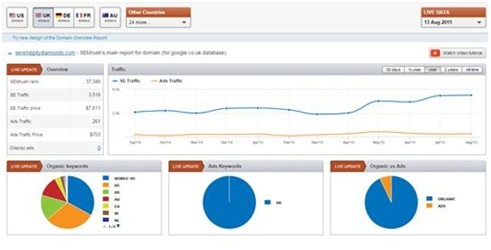If your shiny new content marketing plan has fizzled out and fallen flat, here’s an explanation of how to assess and analyse where it went wrong, and what to do to correct your course going forward.
Effective search engine optimisation strategies rely on a combination of factors, with which content marketing is almost always a cornerstone. It is widely understood within the SEO industry that good copy can create opportunities; and if leveraged properly, these opportunities can generate positive measured results. Good content marketing will enhance website traffic, as well as lead quality and website conversions.
However, there will be failed content marketing campaigns –and failed content marketing campaigns can provide a bedrock of understanding if evaluated properly.
So let’s recap:
- Content marketing is an essential part of just about any SEO strategy
- SEO is either directly or in-directly tied to content marketing plans, and these are typically carried out by an agency of record, internal marketing teams
How Does Content Marketing Create Leverage?
Metrics for defining the success of a particular content marketing campaign consist of mainly of the following:
- Website traffic
- Sales lead quality vs. quantity
- Website conversion rates
- Sales (growth)
- Search rank
- Time spent on website
- Number of inbound links, link profile
- Qualitative customer feedback
- Subscriber growth
And in that order, Digital Search Australia based in Sydney will improve the numbers above.
Content Marketing Fail?
Assuming your campaign did not increase website traffic or time spent, provide a greater number of quality leads, convert a higher volume of visitors to customers and/or subscribers, improve search rank, enhance your website’s inbound link profile, or generate qualitative customer feedback –you’re looking at a content marketing fail.
Here is how to come back from your own content marketing fail.
- Double-Check Your Benchmarks
Maybe there’s been a slump in traffic for your keywords, or maybe you’ve got your audience pegged to the wrong social platform. Here are points to re-evaluate after a weak content marketing execution:
- Re-evaluate the effectiveness of specific keywords integral to your campaign
- Break down how you’ve dispatched content over existing media types; ie. video posts, blogs, portfolio items, or case studies
- Document the time, day of the week, and frequency of your content drips
- Organise engagement across all media types and break it down into a spreadsheet
- Take Another Look at the Competition
And then when you’re done all of that, analyse your competitors in the same way; what have they been up to? Is there anything they’re doing that might disrupt your current strategy?
Consider the behaviour of your competition, their brand ambassadors, and the activity of their social campaigns: brand mentions, sentiment, announcements and noteworthy changes within the organisation.
Perhaps your competitor has decided to work with a PR firm; quite often, unexplained increases in traffic can come from newly minted marketing partnerships or acquired services.
Your competitors didn’t push pause when you launched your campaign, sometimes we only miss the mark because of changes in the market that occurred right around the same time.
- Has the Relevance of Your Content Shifted?
A thorough examination of your content’s search rank will provide insight into how you should shift your keyword targets. Take a look at which media types are most popular on social, organic, and blended search. That includes top-of-page rich media snippets such as Google Local, Google Shopping, News Results, Image Results, text ads, and so on.
The regular release of in-depth industry research in combination with shifts in competitor actions result in a fluid search result landscape.
- Relevance within Social Channels
 Using tools which measure social engagement such as Simply Measured, Hoot Suite, Buffer App, Sprout Social, and SEM Rush can go a long way in helping your business identify content marketing campaign performance.
Using tools which measure social engagement such as Simply Measured, Hoot Suite, Buffer App, Sprout Social, and SEM Rush can go a long way in helping your business identify content marketing campaign performance.
Analyse your own performance alongside that of your competitors to see where traffic is coming from and where it is going. Measuring which content and media types are being consumed the most on a regular schedule will empower your organisation to make course corrections as you push campaigns forward.
- Incoming and Outgoing Links
Using a broad range of online tools to monitor the link profiles of both your own business and that of your competitors will provide valuable insight into the quality, frequency, and types of inbound links being acquired.
Such information can lead to identifying a change in competitor strategy, or new trends emerging in your market.
Google Search Tools and Open Site Explorer are useful for measuring website link profiles, and I also like to monitor specific keywords and brand names with alerts by Google Alerts and Mention.
Content Marketing Failures are Preventable
The key to your success in content marketing is to ensure a “living” approach to it: consistently monitoring for changes to persuasive factors, and being ready to tweak and evolve your campaign on a weekly or monthly basis.
At the end of the day, it might be that your organisation views online campaigns in a similar light as offline print campaigns.
Successful content marketing campaigns happen in real-time, so your search engine optimisation efforts should, too.


